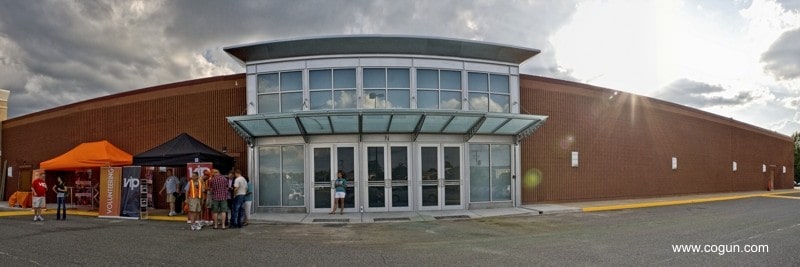 Let me introduce you to Cogun, my newest strategic partner. The Cogun team has a significant knowledge of the trends in church expansions across the country. With that in mind, I caught up with Bryan Miles recently. I was curious to know if he sees any common mistakes when it comes to church building projects. Here’s what Bryan had to share.
Let me introduce you to Cogun, my newest strategic partner. The Cogun team has a significant knowledge of the trends in church expansions across the country. With that in mind, I caught up with Bryan Miles recently. I was curious to know if he sees any common mistakes when it comes to church building projects. Here’s what Bryan had to share.
5 Mistakes Churches Make with Building Projects
1. Forgetting that the church’s influence goes beyond the attendees of the church. Many churches fail to see their influence and impact with the professionals they hire. Churches that think “good stewardship” is beating up on professionals they hire have fully missed what stewardship is. The Church must realize that their actions and words go far beyond the doors of their building. How a church treats and respects architects, general contractors, consultants, and subs is paramount to lasting influence. The people you employ as professionals are watching the way you act, and they want to be inspired by you and you church.
2. Design in a vacuum. Churches who think that the right sequential way to build a building is by starting first with an architect, and having the architect draw drawings, then getting three bids from general contractors will find themselves in a world of pain. Architects don’t know costs and general contractors will design ugly buildings. But, together, an architect and a general contractor can partner together for an incredible, custom solution that is a win-win for your church both in terms of price and design. Unfortunately, horror stories emerge all over where churches hired an architect, they created fancy drawings, and casted vision with those drawings only to realize that what was drawn was not what they could afford. Early on, a wise church seeks to reconcile cost against what is mission critical, then designs and casts vision that supports the mission of the church.
3. Letting price be the variable on all decisions. Churches that base their decision solely on price get exactly what they are after. It’ll likely be an underwhelming building that screams “GO AWAY” to the public. Your building and grounds should be a portal for all who would be first-time guests. Regardless of your budget, a church must always be mindful of the ways it is communicating with its public. With that said, why you would let dollars be the one thing that will impact how the un-churched, de-churched, and re-churched view you and possibly approach you? Pre-determined budgets are a great way to safeguard against last-minute cost decisions that can potentially harm your vision.
4. Catering to “insiders” with misguided and misaligned agendas. One way to keep new people out of your church is succumbing to the people inside the church that manipulate leaders to use their money in a specific way. Money with strings attached will likely compete with your values and vision. Be smart enough or ask enough questions to pull hidden agendas out of people. Be brave enough to tell “insiders” to take their money elsewhere if they are not solidly behind the vision. God can get it done without their money. Call them out and minister to them all in one conversation. People intent on hijacking your church with their money have forgotten that the church is not about them.
5. Forgetting that the church is for finding lost people and for building disciples to go find lost people. With all of eternity at stake, how could you ever let your church not be about leading people into a personal relationship with Jesus? The things you do and design for your building must be focused for this cause. Everything else is secondary. Churches who forget about the lost find themselves talking about potluck dinners and the “good ole days”. All the while, the lost are still lost. Does your design equal a church equipped to go find lost people for Jesus? Where’s your sense of urgency? How does that sense of urgency play out in your design? Once the design is built, how will others see evidence of life-change that motivates them to go find more lost people for Jesus?
Cogun is helping churches all over the country with their facility expansions. You are probably pretty familiar with some of the churches they’ve helped. What’s unique about Cogun is their process of helping churches through all phases of expansion including consulting, design, project costing, financing and construction. I have a number of good friends who either work for, work with or have been served by the Cogun team.
If you think a new building or a facility renovation is in your future, I’d love to connect you with the Cogun team. Please take a moment to complete this brief contact form, and I’ll have someone follow up with you and begin the conversation.
__________
Cogun is my newest strategic partner for TonyMorganLive.com. Though they are obviously paying me to help get the word out, I chose to share their story because I believe in their team and the churches they’ve helped.







Leave a Reply